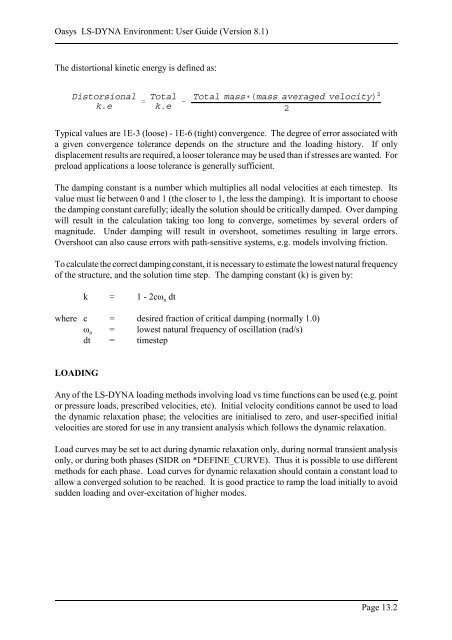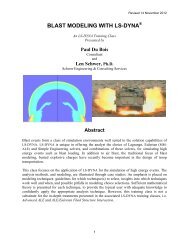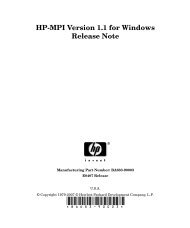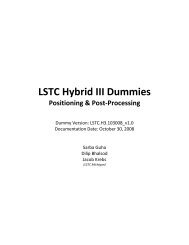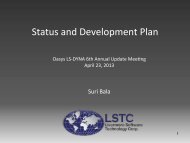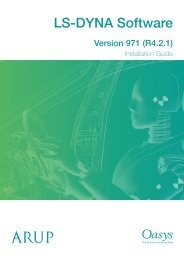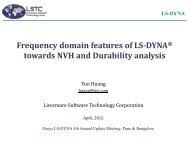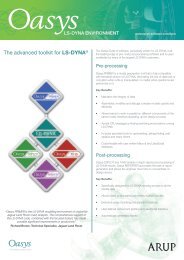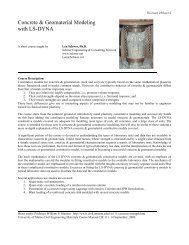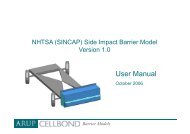Oasys LS-DYNA Environment 8.1 VOLUME 3 ... - Oasys Software
Oasys LS-DYNA Environment 8.1 VOLUME 3 ... - Oasys Software
Oasys LS-DYNA Environment 8.1 VOLUME 3 ... - Oasys Software
Create successful ePaper yourself
Turn your PDF publications into a flip-book with our unique Google optimized e-Paper software.
<strong>Oasys</strong> <strong>LS</strong>-<strong>DYNA</strong> <strong>Environment</strong>: User Guide (Version <strong>8.1</strong>)<br />
The distortional kinetic energy is defined as:<br />
Distorsional<br />
k.e<br />
Total<br />
k.e<br />
Total mass (mass averaged velocity) 2<br />
Typical values are 1E-3 (loose) - 1E-6 (tight) convergence. The degree of error associated with<br />
a given convergence tolerance depends on the structure and the loading history. If only<br />
displacement results are required, a looser tolerance may be used than if stresses are wanted. For<br />
preload applications a loose tolerance is generally sufficient.<br />
The damping constant is a number which multiplies all nodal velocities at each timestep. Its<br />
value must lie between 0 and 1 (the closer to 1, the less the damping). It is important to choose<br />
the damping constant carefully; ideally the solution should be critically damped. Over damping<br />
will result in the calculation taking too long to converge, sometimes by several orders of<br />
magnitude. Under damping will result in overshoot, sometimes resulting in large errors.<br />
Overshoot can also cause errors with path-sensitive systems, e.g. models involving friction.<br />
To calculate the correct damping constant, it is necessary to estimate the lowest natural frequency<br />
of the structure, and the solution time step. The damping constant (k) is given by:<br />
k = 1 - 2cω n dt<br />
where c = desired fraction of critical damping (normally 1.0)<br />
ω n = lowest natural frequency of oscillation (rad/s)<br />
dt = timestep<br />
LOADING<br />
Any of the <strong>LS</strong>-<strong>DYNA</strong> loading methods involving load vs time functions can be used (e.g. point<br />
or pressure loads, prescribed velocities, etc). Initial velocity conditions cannot be used to load<br />
the dynamic relaxation phase; the velocities are initialised to zero, and user-specified initial<br />
velocities are stored for use in any transient analysis which follows the dynamic relaxation.<br />
Load curves may be set to act during dynamic relaxation only, during normal transient analysis<br />
only, or during both phases (SIDR on *DEFINE_CURVE). Thus it is possible to use different<br />
methods for each phase. Load curves for dynamic relaxation should contain a constant load to<br />
allow a converged solution to be reached. It is good practice to ramp the load initially to avoid<br />
sudden loading and over-excitation of higher modes.<br />
2<br />
Page 13.2


